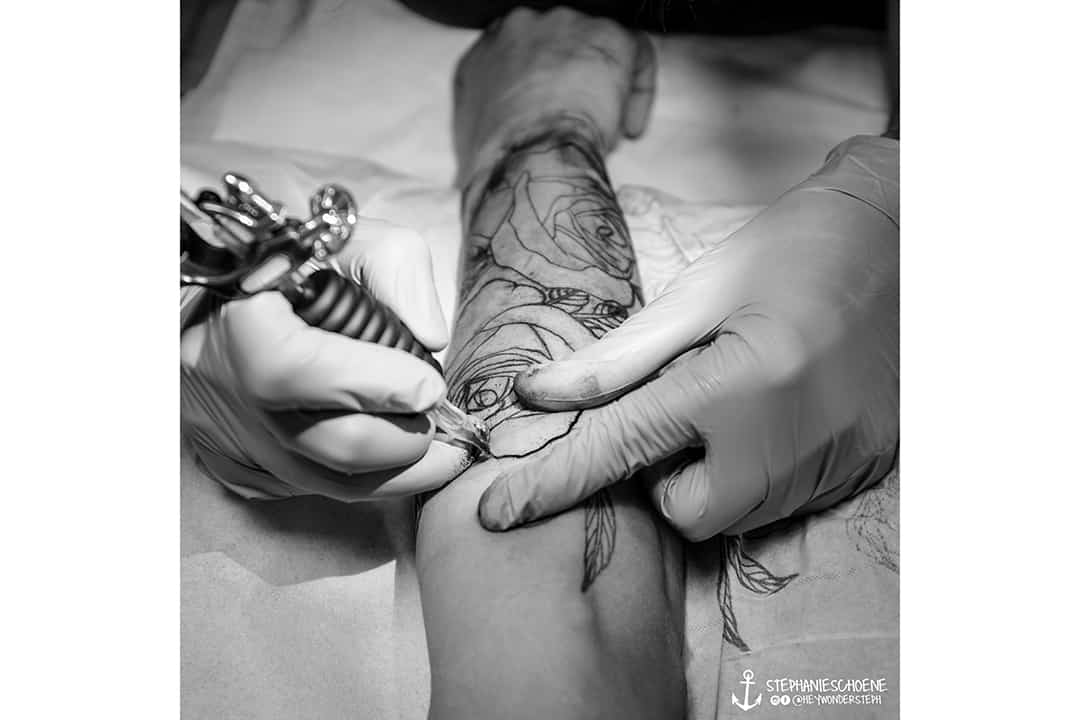Some people choose to wear their hearts on their sleeves, while others choose to wear it on their skin. According to a 2012 Ipsos poll, 22 per cent of people in Canada have a tattoo, which suggests that they’re pretty popular body modifications. Whether they’re stick- and-pokes done in someone’s basement at a house party or pieces that have been planned out extensively, most tattoos tell stories. Every tattoo is a permanent piece of art, history, or tradition. But how do tattoos work, exactly?
A brief history of tattooing
Archaeologists have found that the oldest recorded tattoos date back as far as 3,100 BC, meaning that tattooing has been practiced for quite some time. Across the world, methods of tattooing vary from single needle stick-and-pokes to procedures that use mallet-type instruments used to hammer a needle into the skin.
Archaic tattoo machines are reminiscent of Edison’s blueprint for an electric pen. Today’s modern coil tattoo machines, on the other hand, rely on alternating electromagnetic currents that power anywhere from one to 20 or more needles.
A common misconception about tattoos is that they’re bad for your health. While inks commonly used for homemade stick-and-poke tattoos such as India ink or calligraphy ink can be harmful, professional tattoo ink is usually safer. If you’re curious about your ink, most brands of ink offer publicly available Material Safety Data Sheets for your viewing pleasure.
So, how do tattoos stay permanent?
Your skin is made up of three main layers: the epidermis, which is the visible outer layer; the dermis, which contains hair follicles; and the subcutaneous layer, which lies below the dermis. In the case of tattooing, ink is deposited at the dermal layer, which is home to blood cells and lymphoid cells. These cells are triggered in response to physical damage — damage like the wounds inflicted by tattoo needles.
Of course, your immune system registers tattoo ink as a foreign body, which is why it acts very quickly to compensate for this new guest. If you have a tattoo, this is why your skin swells and puffs up shortly after your new ink has been completed.
This response is the clever work of ‘macrophages’: specialized immune cells that engulf foreign bodies and store them in little pockets called ‘vacuoles.’ However, tattoo ink can’t be broken down as easily as bacteria, so the macrophages remain in the dermis. As these macrophages die, they release the ink like a burp, and it is consumed by new macrophages. This cycle continues in perpetuity, which is what allows tattoos to maintain their permanence.
Removing tattoos
Is there any way to get rid of that misspelled inspirational quote or wonky crescent moon from when you were 18? While you can cover smaller tattoos with larger one, the most well-known method of eliminating an old tattoo is laser tattoo removal. This method can be quite painful due to the fact that the lasers used in tattoo removal are intended to break down ink particles using heat.
Some colours of ink are easier to remove than others. Black ink absorbs all wavelengths of light, so it’s the easiest to remove. Ink colours like white or red only absorb certain wavelengths, which makes them more difficult to erase.
Despite the power of lasers, they also have some limitations when trying to completely remove permanent tattoos. The macrophages mentioned above are often recruited by the body to repair laser-damaged tissue, at which point they engulf expelled ink and prevent it from disappearing completely.
Until better methods of getting rid of tattoos are developed, here’s my advice: think before you ink!


